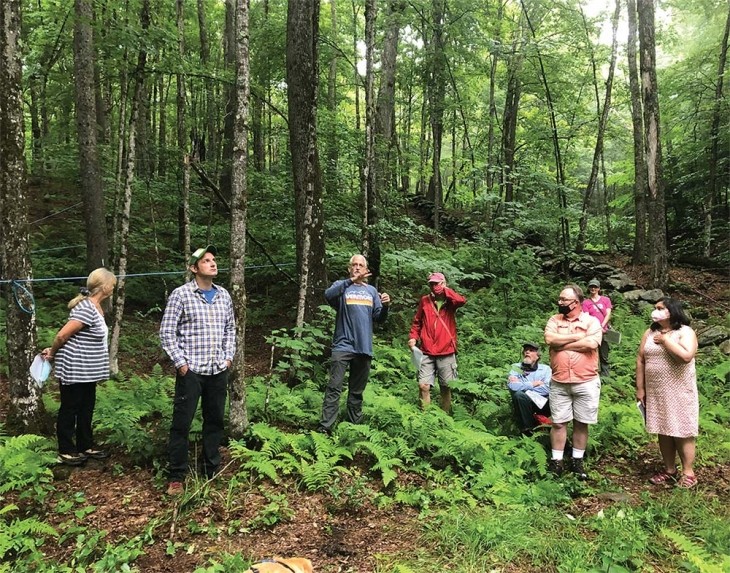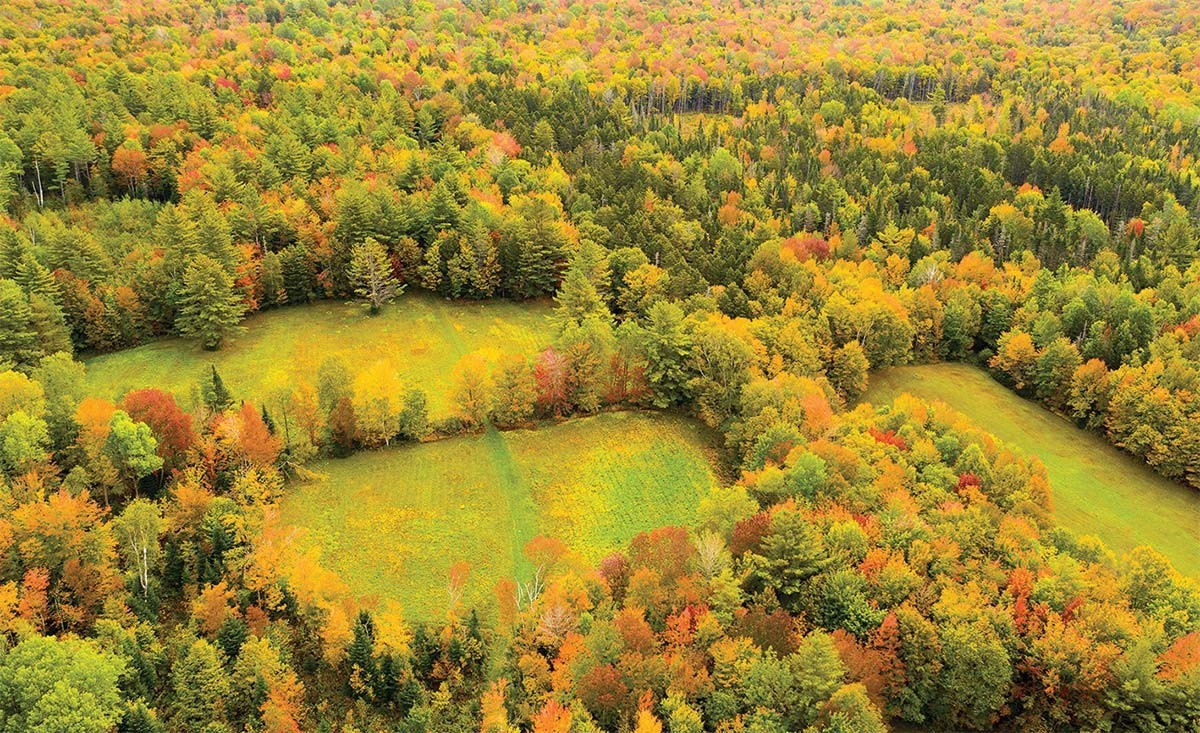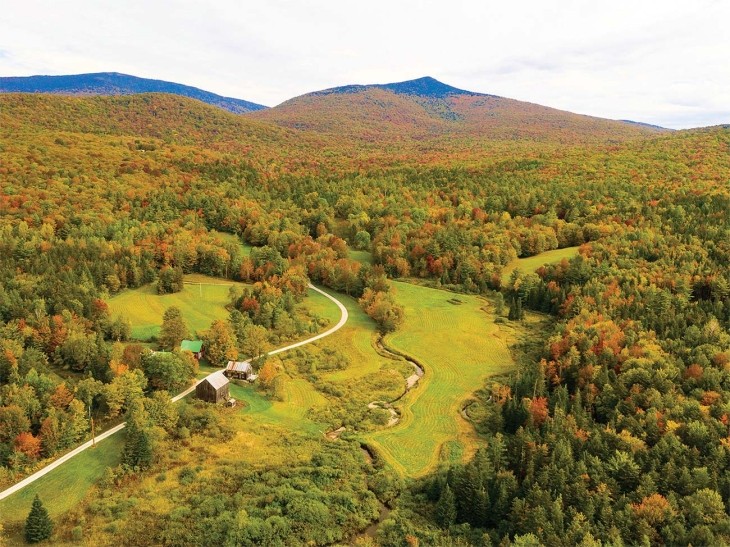Jockey Hill Farm in Shrewsbury, Vermont has been in the Stout family since 1942. It has been protected by a conservation easement since the early 1990s and been enrolled in Vermont’s Current Use Program since 1980. Tim Stout, who currently owns the land along with his brother Chris, explained that the 173-acre property comprises 14 separate, contiguous parcels. In the 19th century, much of the land was cleared for sheep farming, but today it’s more than 90 percent forested. There’s a mix of stand types, as well as fields and small pockets of wetlands.
The parcel lines are irrelevant to the wildlife, the trees that grow there, and the people who walk through the fields and forests, and Stout stressed that it’s crucial to see the whole picture in managing the property. “It’s important to look at the land holistically,” he said. “How do all the pieces fit – wildlife, including birds and pollinators, fields, forests, streams, ponds? They’re connected and represent a unique ecosystem where everything is dependent on everything else.”

The property’s management plan has an overall theme of promoting complexity. “One of the most important lessons is that a messy forest is the best forest,” Stout said. “The more trees on the ground, the more snags, the more saplings, the more tree species of different ages – all have their benefits, from accumulating more carbon to enhancing habitat. With climate change, we’re going to need complex, highly resilient forests and fields that are nurtured for these attributes.” Stout listed five management goals: improving wildlife habitat, preserving the land, maximizing carbon storage and sequestration, increasing the forest’s resiliency, and sharing the property for educational purposes.
Jockey Hill Farm abuts Calvin Coolidge State Forest. The Catamount Trail and Long Trail hiking routes and the Vermont Association of Snow Travelers (VAST) network all pass through the land, so there is a long history of public use.
Since last summer, Stout has been inviting others to walk the trails through the fields and forest here. He has also hosted educational programs, sometimes with his forester and the sugarmaker who taps the Stouts’ trees on hand to answer questions.
One focus of these programs is carbon storage and sequestration. Before retiring and settling in Vermont (Stout and his wife, Nan, live in Burlington but visit Jockey Hill often), Stout had a 35-year career that focused on working with large utility companies across North America to promote energy efficiency and renewable energy to industrial, commercial, and residential customers.
“I want to manage our forests with carbon in mind,” he said. “If you ask people to look at a forest and determine where the carbon is, most people don’t know.” He gave the example of his practice of leaving woody debris on the forest floor, where it temporarily stores carbon and then enriches the soil as it decomposes. Forest soil may store as much as 60 percent of a forest’s total carbon, although it often exists in a steady state, meaning that it doesn’t accumulate (sequester) more carbon than it releases. All living trees store carbon, and fast-growing young forest stands are especially effective at carbon sequestration.
Because sequestration is one of his priorities, Stout plans to convert some of his fields to young forest stands. He’s also collaborating with various groups to educate other landowners about carbon markets. The timing of future harvests will be planned with carbon goals in mind, as well as opportunities to improve forest health and to enhance the land’s resiliency against future stressors such as droughts and extreme weather events. Stout also works to decrease invasive species so that native trees will grow more efficiently.
The Stouts have worked with foresters as well as with the state Forests, Parks & Recreation Department and Vermont Fish & Wildlife, and Tim has completed training with Vermont Coverts (a peer-to-peer community of landowners, professionals, and others learning from and supporting each other to enhance wildlife habitats through sound forest management). “In Vermont we have incredible resources to help us understand how we can improve our land, whether it’s for birds, larger wildlife, riparian zones, rivers, and on and on. There are all these programs to tap into,” he said.
“I have a huge amount of passion for my land. I have a 3-month-old grandson, and I look at our land and wonder what it’s going to be like when he’s 50, in 2070,” Stout said. “Our woods are going to be very different. Many of the tree species in our forests that thrive today are unlikely to survive in future decades as our climate changes. Am I going to be happy sitting in my assisted living facility in 20 years and wondering if I did everything I could to protect the land? If I can broadcast what I’m trying to do through my website and with educational field trips on the property, maybe I can get other landowners to pursue similar paths.”



